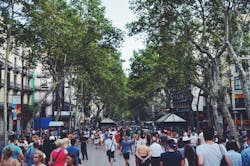Asians Projected to Become Largest Immigrant Group in the U.S.
The size of the Asian born population in the U.S. has quickly been rising and Asians eventually will overtake Hispanics as the nation’s largest immigrant population, according to the Pew Research Center. A recent study by the nonpartisan fact tank found that the U.S. Asian population grew 72 percent between 2000 and 2015, the fastest growth rate among any racial or ethnic group. By 2055, Asians are projected to become the largest immigrant group in the U.S., making up 38 percent of all immigrants, ahead of Hispanics at 31 percent.
Of the nation’s 20.4 million people with Asian origins, 94 percent come from 19 countries in East and Southeast Asia and the Indian subcontinent. The largest subgroup is Asian Americans of Chinese origin, at 24 percent of the total Asian population (4.9 million). Other prominent groups included Indian-origin Asians at 20 percent (4.0 million) and Filipinos at 19 percent (3.9 million).
Other groups that count as Asian in the study include Japanese, Hmong, Bangladeshi, Bhutanese, and Indonesian Americans. Americans of Middle Eastern, Central Asian, or Russian descent were not included. Ethnicity is based on self-described race or ethnicity, per data from the U.S. Census Bureau.
Given the variation of nationalities, Asian American households cannot be classified broadly. According to Pew, the median annual income of households headed by Asian Americans is $73,060, well above the $53,600 median income of all U.S. households. But, the 19 groups have varying median income levels, ranging from Burmese, Nepalese, and Hmong households below $50,000, and Indians, Filipinos, and Japanese households, all at $74,000
or more.
The Asian homeownership rate is 57 percent, up from 53 percent in 2000, but lower than the overall U.S. ownership rate of 63 percent in 2015. Vietnamese (65 percent) and Japanese (63 percent) households have the highest homeownership rates of that demographic.
Some 26 percent of Asians—a higher percentage than the U.S. overall (19 percent)—live in multigenerational households, defined as homes with two or more adult generations. The Bhutanese (53 percent), Cambodians (41 percent), and Laotians (38 percent) had the highest rates of multigenerational living. Almost half of all Asian Americans (45 percent) live in the West, with 31 percent alone living in California.
